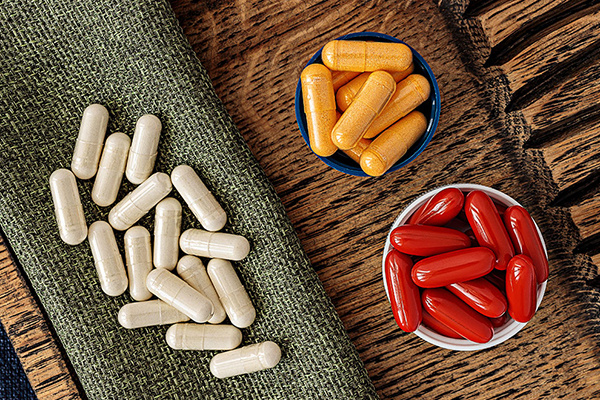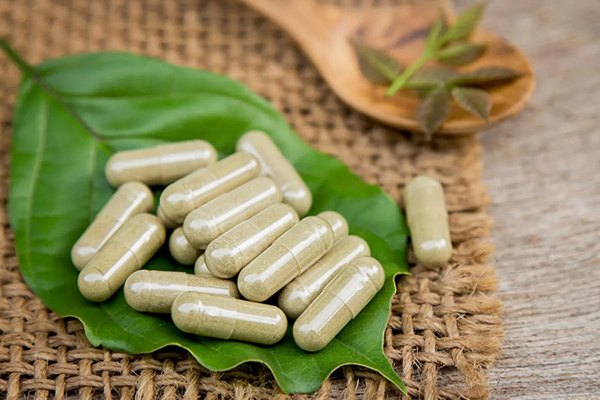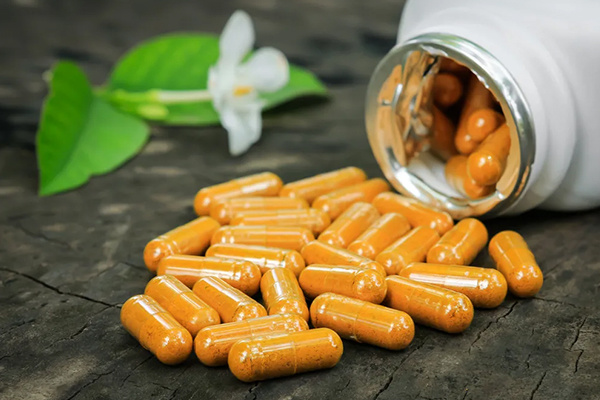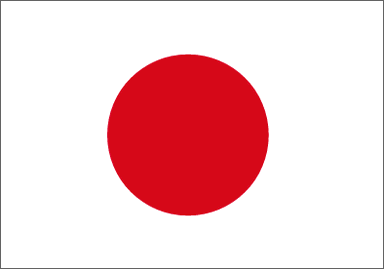Hard capsule
Hard capsule processing refers to filling a certain amount of edible raw and auxiliary materials into uniform powder or particles into hollow capsules, or directly packaging the raw and auxiliary materials into hollow capsules. The specifications of hard capsules are divided into: 00 #, 0 #, 1 #, 2 #, 3 #, 4 # and 5 #. The larger the number, the smaller the capacity.
1、 Classification of Processable Hard Capsules:
 1. Gelatin hollow capsule: a capsule shell with a specific color and shape, using gelatin as the main raw material. In the production process, there is no need for adhesive and large pressure, and it is easy to disintegrate and release in gastric juice, which can improve the bioavailability compared with tablets and pills. At the same time, it has the advantages of accurate dose, convenient carrying and use, and safe sealing. It is soluble in water at 30 ℃, swells and deforms at low temperature, and its water content is between 13% and 16% when leaving the factory. At 35%~65% relative humidity and 15~25 ℃ temperature, the product can be guaranteed for 24 months. Ideal storage conditions: relative humidity 50%, temperature 21 ℃.
1. Gelatin hollow capsule: a capsule shell with a specific color and shape, using gelatin as the main raw material. In the production process, there is no need for adhesive and large pressure, and it is easy to disintegrate and release in gastric juice, which can improve the bioavailability compared with tablets and pills. At the same time, it has the advantages of accurate dose, convenient carrying and use, and safe sealing. It is soluble in water at 30 ℃, swells and deforms at low temperature, and its water content is between 13% and 16% when leaving the factory. At 35%~65% relative humidity and 15~25 ℃ temperature, the product can be guaranteed for 24 months. Ideal storage conditions: relative humidity 50%, temperature 21 ℃.
2. Enteric-coated gelatin hollow capsule: It is a capsule shell with specific color and shape made of gelatin and enteric-coated materials. It does not disintegrate in gastric juice for two hours without cracks, and disintegrates and dissolves in intestinal juice within 30 minutes, providing a perfect solution for protein, polypeptide and biological preparations.
 3. Colon-soluble hollow capsule: It is a capsule product carefully prepared by scientific formula with medical gelatin and special coating materials. The product is free from cracks and disintegration in gastric juice for two hours and intestinal juice for three hours. It is disintegrated and released at a fixed point within 30 minutes at the colon, and its appearance and quality are equivalent to hollow capsules.
3. Colon-soluble hollow capsule: It is a capsule product carefully prepared by scientific formula with medical gelatin and special coating materials. The product is free from cracks and disintegration in gastric juice for two hours and intestinal juice for three hours. It is disintegrated and released at a fixed point within 30 minutes at the colon, and its appearance and quality are equivalent to hollow capsules.
4. Plant hollow capsules: made from plant cellulose raw materials, in addition to the natural concept advantages, plant capsules can also improve the absorption and digestion of protein, fat and carbohydrates, with technical advantages and characteristics that traditional gelatin capsules do not have. The color of plant capsule shell is mostly transparent, and most of the colors are relatively light. It is the best choice for domestic and foreign customers to make high-end products.
2、 Advantages of hard capsule processing:
The company's factories have more than 5000 square meters of hard capsule GMP standard production plants, several full-automatic packaging lines, hundreds of unique formulas in the R&D center, and several packaging production lines, which can carry out packaging of bottles, bags, duralumin, aluminum plastic, etc., and can fully meet the requirements of different customers for labeling.
The appearance is bright and clean, beautiful, and can cover up the unpleasant taste of some raw materials, which is easy to accept and take.
 The biological availability of health function factors is high, the utilization rate of main materials is high, and the addition amount of auxiliary materials is small. During the preparation process, no mixture or pressure can be added, so the disintegration speed in the gastrointestinal tract is fast. Generally, the functional substances start to disintegrate and release in the body within 3 to 10 minutes after taking the drug, which has obvious effect and good absorption.
The biological availability of health function factors is high, the utilization rate of main materials is high, and the addition amount of auxiliary materials is small. During the preparation process, no mixture or pressure can be added, so the disintegration speed in the gastrointestinal tract is fast. Generally, the functional substances start to disintegrate and release in the body within 3 to 10 minutes after taking the drug, which has obvious effect and good absorption.
Good stability, photosensitive substances and heat-sensitive substances, such as vitamins, are better placed in hard capsules that are opaque to light and heat, which is convenient for storage.
It can prolong the release of health care functional substances. The raw materials can be made into granules, then coated with materials with different release rates, mixed evenly in proportion, and put into empty capsules to achieve the purpose of prolonging the effect.
3、 Hard capsule production process:
1. Raw and auxiliary materials, 2. External cleaning, 3. Crushing and screening, 4. Weighing, 5. Mixing, 6. Granulation, 7. Drying, 8. Total mixing and granulation, 9. Transfer, 10. Filling, 11. Polishing, 12. Transfer, 13. Inner packaging, 14. Outsourcing, 15. Finished products to be inspected

 English
English 简体中文
简体中文 Spanish
Spanish French
French German
German Portuguese
Portuguese Russian
Russian Arabic
Arabic Japanese
Japanese Korean
Korean Italian
Italian Malay
Malay Thai
Thai Hindi
Hindi Vietnamese
Vietnamese Polish
Polish Finnish
Finnish Dutch
Dutch Czech
Czech Lithuanian
Lithuanian Norwegian
Norwegian Indonesian
Indonesian Top
Top
 E-mail
E-mail
 whatsapp
whatsapp



